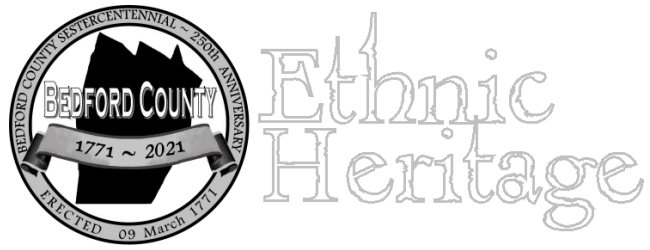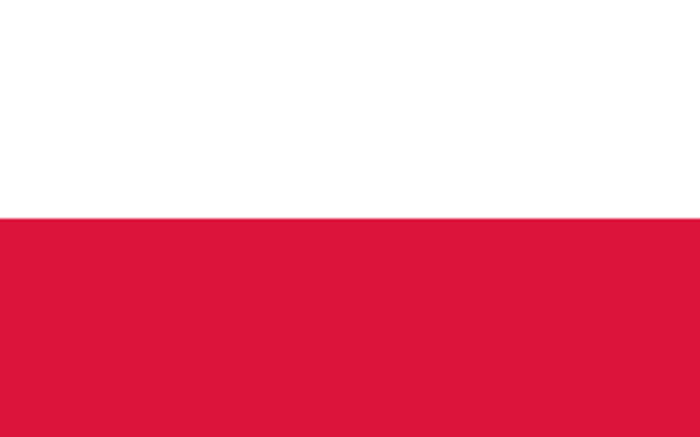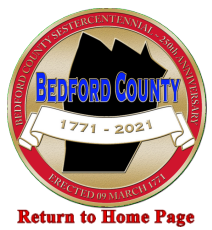
Polish~American Day
05 April 2021

The American Community Survey, compiled between 2008 and 2012 and being the most recent analysis, identified 1% of the total population of Bedford County as descending from Polish ancestors.
Polish immigrants were some of the earliest Europeans to arrive on the North American continent. There were Polish people at the Jamestown colony as early as 1608.
The Polish people celebrate two holidays that both commemorate their heritage and history. The first holiday is called Casimir Pulaski Day. Held on the first Monday in March, the holiday celebrates the Polish compatriot who came to the Colonies to help the Patriots fight the British in the American Revolutionary War. He was an outstanding cavalry officer in his homeland and helped to establish the cavalry for the Continental Army. The second holiday is celebrated on the Monday following Easter Sunday and is called Dyngus Day.
Dyngus Day is a moveable holiday. It occurs on the Monday following Easter Sunday, and since Easter varies from year to year, it varies also. It is the first day after Lent. The day is also known as 'Wet Monday' because in order to let off steam after Lent, the people of Poland and the Ukraine douse buckets of water over each other. Some might slap their friends and relatives with wet towels or spray each other with squirt guns. Prior to the 1930s, Polish~Americans would go from house to house requesting treats in exchange for not doing any tricks to the homeowner, much like Halloween. That practice died out and is practiced very rarely at the present-day.
Attempting to soak each other is just one aspect of the holiday. Like their German neighbors, Polish~Americans enjoy dancing to polka music at large community festivals. The lively dance known as the polka originated in the Bohemia region of the present-day Czech Republic. Bohemia bordered Poland to the southwest and in fact became, temporarily in the 10th Century, under Polish domination. The culture of the two regions tended to mix, so although the polka originated in Bohemia, it likewise become associated with the culture of the Polish.
As with other ethnic groups, Polish~Americans celebrate their culture by indulging in feasts of dishes eaten by their ancestors down through the ages. One food that is emblematic of Polish culture is borscht. Borscht (i.e. barszcz) is a type of soup commonly made of beets, but sometimes it is comprised of cabbage, sorrel or even rye. The important thing is that it be sour tasting. The preparation of borscht begins by boiling beets, potatoes, tomatoes, bell pepper and celery. Onions, tomatoes are sauted to form a sauce, then cabbage is mixed in and simmered until the cabbage is tender. The beets and potatoes are removed from the boiling vegetables and mashed together. All of the ingredients are then mixed together in a stock pot and continued to be boiled together. When the dish is served, a dollop of sour cream and perhaps a sprig of dill is placed on top of the borscht.
The Polish, like their German neighbors, love sausage. Kielbasa is any kind of Polish sausage. In fact, the word means: sausage. Polish~Americans enjoy many kinds of it. Kielbasa can be made out of pork, beef or veal and even blood and it can be smoked or unsmoked. Certain kielbasa is flavored with garlic, pepper, caraway or marjoram. Kaszanka is a blood sausage made of what is called 'black pudding.' Kielbasa biala is an uncooked white sausage often used in soups. Kielbasa odesskie is sausage made of beef. Kielbasa wedona is smoked sausage. Krakowska is a hot-smoked sausage seasoned with pepper and garlic. Mysliwska is a pork sausage that is smoked. Weselna is variously known as 'wedding sausage' and is smoked. And finally, Wiejska is a pork and veal sausage flavored with marjoram and garlic.
Pierogi are dumplings or potpie-like pastry of unleavened dough fashioned into small pockets and stuffed with a single or combination of mashed potatoes, sauerkraut, cheese, spinach, mushrooms, ground meat or even fruit. The pierogi are boiled in water and sometimes pan-fried before serving. Despite borscht being a type of soup itself, it is often paired with Rosol, a soup comprised of meat such as chicken, beef, veal or fowl including grouse or partridge. Vegetables, including carrot, leek, celery and parsley may be added to the rosol. Speaking of soups, Krupnik is a thick soup made from broth, either meat or vegetable, into which is added potatoes and barley and sometimes other vegetables including carrots, leeks and celery.
A stew dish favored in Poland is called Golonka which is boiled ham hock to which vegetables or sauerkraut might be added, then topped with a beer/honey glaze. Potato pancakes (i.e. placki ziemniaczane) are usually topped with either goulash, meat sauce, mushrooms, applesauce or pork crisps.
Golabki is known, in regions that have been heavily settled by the Pennsylvania Dutch or their descendants, by the name: 'pigs in a blanket.' Golabki consists of minced pork mixed with rice or barley and diced onion around which is wrapped a cabbage leaf. Most people simply call them 'stuffed cabbage leaves.' The golabki is sometimes covered with a tomato sauce. A variation of golabki is Bigos, which consists of chopped or diced meat cooked with sauerkraut and shredded fresh cabbage. The meat can be anything from pork, beef or veal, or poultry including chicken turkey, duck or goose or even some type of kielbasa. Onions or mushrooms might be added to the dish. Tradition has it that bigos is best after it has been heated, refrigerated and reheated.
Dough made from wheat, buckwheat or rye, rolled thin and cut into triangles are boiled and then drained. These Lazanki are coated with lard (melted pork fat such as bacon drippings) or sour cream. Lazanki makes a nice side dish for sausage.
A Dyngus Day feast concludes with desert of various pastries. Paczki is a kind of doughnut filled with custard or jam. Unlike a normal doughnut that is deep fried in oil, the paczki is made from especially rich dough that includes sugar, eggs, lard or butter, yeast and milk, and is baked. Like a filled doughnut, the paczki can contain any sort of fruit jam or cream based custard. Paczki may be dusted with confectionary sugar or they can be glazed. It was noted above that the Dyngus Day feast might include the paczki, but being such a sweet and rich pastry, it is more often made to be eaten on Fat Tuesday leading into Lent. Rugelach is a crescent shaped pastry made by rolling a triangle shaped piece of dough around fillings that might be raisins, fruit preserves, walnuts or chocolate. Babka is a kind of bread that consists dough rolled out into lengths and spread with fillings such as chocolate, fruit or even cheese. The lengths of dough are then braided and baked. Angel wings are twisted ribbons of dough which are deep-fried and sprinkled with powdered sugar, much like the popular local 'funnel cake'.
Dyngas Day is traditionally celebrated with the drinking of the 'national' alcoholic beverage: Vodka. The name 'vodka' is derived from the Slavic word for 'little water.' It is made by distilling fermented cereal grains. Although seldom flavored, it is often mixed with other beverages to give them a little alcoholic kick. One of the flavored vodkas is called Zubrowka which is flavored with bison grass, an aromatic herb.
Additional Information Might Be Added Here. Please Check Back.
Click on this logo to return to the Calendar page.

